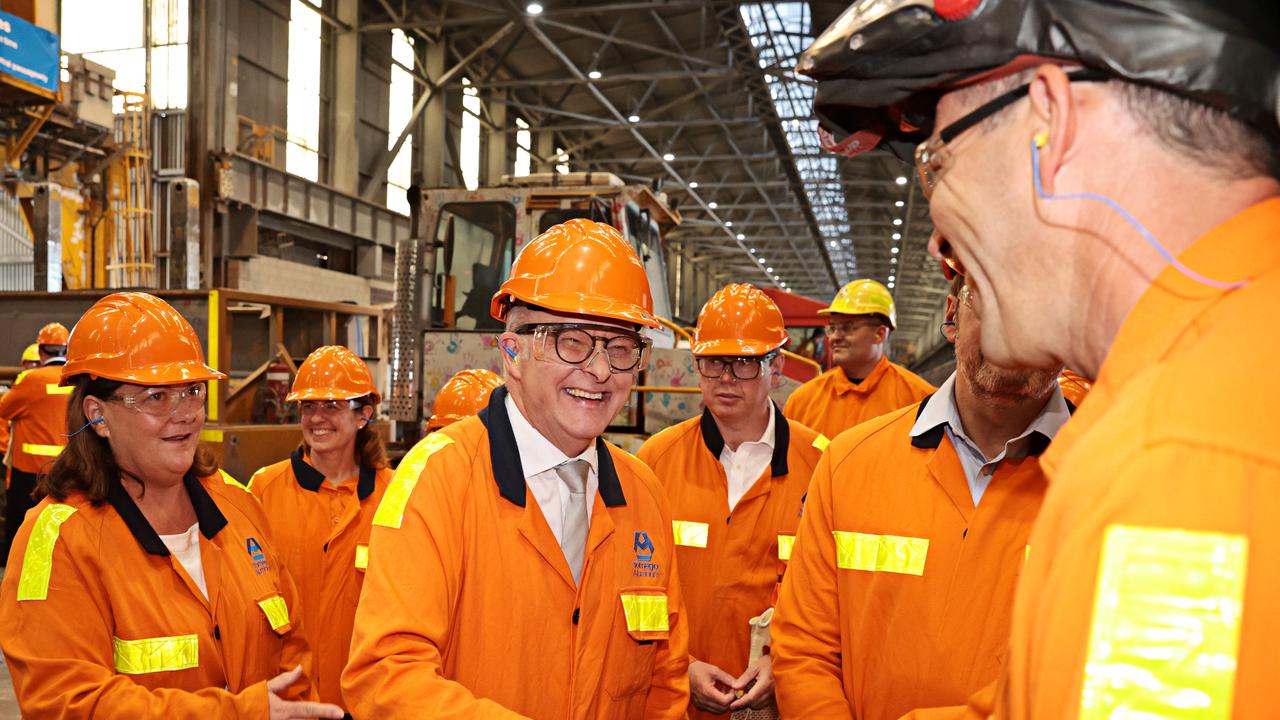The local software firms cashing in on Apple’s Vision Pro
Australians have finally got their hands on Apple’s newest computer, Vision Pro, but local software developers have been positioning themselves for years to reap the benefits.
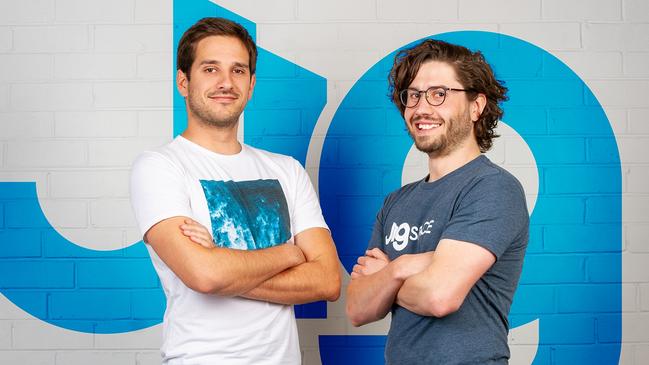
Business
Don't miss out on the headlines from Business. Followed categories will be added to My News.
Apple’s Vision Pro – the world’s first spatial computer – launched in Australia on Friday. But Melbourne software developer Zac Duff has already amassed more than 60,000 downloads of his JigSpace app, boasting enterprise clients including Emirates, PepsiCo and Sauber Motorsport.
Mr Duff, who once built games for TimeZone, has secured some big name backers and won praise from Apple chief executive Tim Cook – who has called him a partner – and more than $4m in funding from Melbourne-based venture capital firm Rampersand. It also secured $13m this week, including $4.4m from Breakthrough Victoria, the state’s VC arm.
To Mr Duff, Vision Pro – which costs almost $6000 – is not a mere novelty. Since Vision Pro’s US launch in February, JigSpace has already doubled its revenue.
The ability to represent models or a “jig” not only in 3D but also animate them to show exactly how they work offers a platform that has the potential to save businesses millions of dollars.

Mr Duff – who founded JigSpace with Numa Bertron – says it will change the way companies develop new products and train staff, and also become the new presentation standard, supplanting Microsoft’s PowerPoint. The market is huge but for the moment he is targeting sales and marketing in the durable manufacturing industry, which is an opportunity worth about $US1.5bn ($2.2bn) alone.
It will appeal to the likes of Amazon’s billionaire founder Jeff Bezos, who famously banned PowerPoint presentations, saying they were a productivity killer.
“In durable manufacturing, they’re making big, large, complex, technical, expensive things, and they need to explain their products, processes and concepts,” Mr Duff told The Weekend Australian.
“They need to communicate that and typically what they’re doing now – let’s say in training – they’re creating PowerPoint presentations. They’re making a lot of documentation. They’re taking a lot of screenshots, videos, etc, to do training on a new Airbus A380 … they’re doing familiarisation for engineering students like the Emirates aviation college, for example.
“This is where it becomes incredibly valuable to have a virtual version, to have a ‘jig’ where students can pull it apart, they can see the process. They can go through that familiarisation without having to have a physical thing present.”
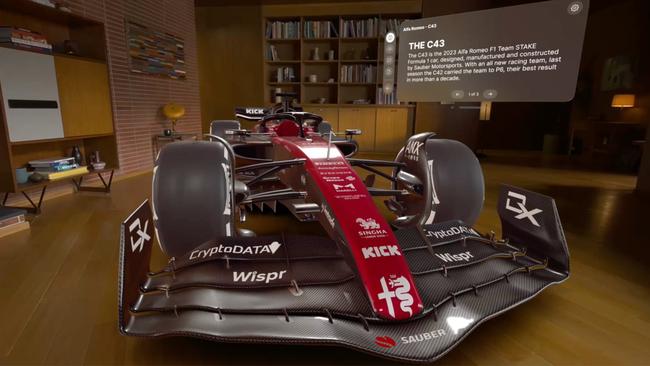
JigSpace not the only company in the local region capitalising on the technology. New Zealand software developer Devin Davies Crouton cooking app has been downloaded more than 200,00 times.
JigSpace harnesses augmented reality to allow people to replicate their products digitally and position them, 3D, into spaces. When I tried the app, I was able to beam a full-scale Formula 1 car in my lounge room. While it was fun to sit behind the driver seat of the race car and walk around it, its purpose came from Sauber Motorsport. (Australia’s youngest billionaire Ed Craven’s cryptocurrency and gaming empire Stake has now secured the naming rights to Sauber’s F1 team).
Using a 3D digital jig allows marketing teams to view how their branding is placed on a vehicle without the need for expensive mock-ups or difficult to visualise 2D images. They can even test out the aerodynamics of the vehicle, and pull off panels, tyres, even the steering wheel for a closer inspection.
JigSpace has adopted a similar model to Canva. It makes its app freely available and charges for more specialised tasks. Durable manufacturing was targeted first because 3D CAD files are available for most products, allowing Jigs to be created quickly.
Mr Duff said this allowed sales and marketing teams to “get on with their job, which is communication”.
“They can now take those assets, just the ones that their engineers use … bring it into the JigSpace tool and create a jig in minutes without ever having to worry about what the format is. They don’t have to worry about how complex it is. It’ll handle all of that.”
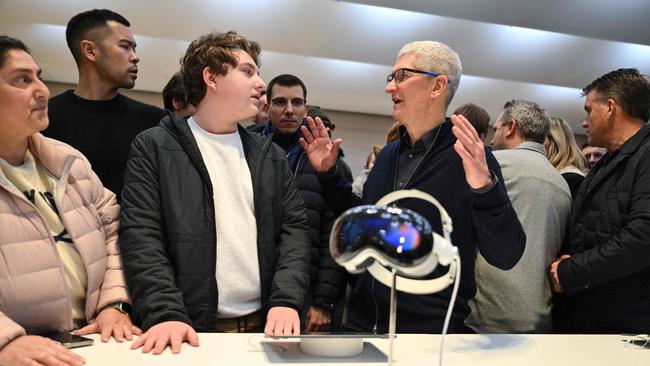
JigSpace, despite the attention it has attracted from Apple in Vision Pro demonstrations, has not been an overnight success. Mr Duff started working on the project in 2017 when Apple announced tools, which it called its ARKit, allowing developers to join its augmented reality vision.
“We got rid of all of our other platforms. Just went on iOS, focused on ARKit. We wanted to be the best on this platform so when Apple came out with whatever they had cooking over there, we would be right at the front of it. So we took a big punt on that, and we built everything on Jig around that.”
It’s that long-term vision that appealed to Rampersand partner Andrew Poesaste.
“We’ve had 30 years of PowerPoint. The next 30 years could be Jig,” Mr Poesaste said.
“Zac has always had the vision that Jig could become a verb. I know that’s always been the vision of a start-up. So for me, it’s like a global race now to become the presentation layer of spatial computing, and Australian company JigSpace is at the forefront, has a first mover advantage.
“It has, like the real opportunity to own the presentation layer for special computing.”
Rampersand led JigSpace’s $US1.4m seed round in 2020, co-led its subsequent $4.7m and $5.2m series A rounds and Mr Poesaste is not planning on a quick exit. It joined Jigspace’s latest raise this week, which was led by Breakthrough Victoria, with Aura Ventures and Anorak Ventures joining as investors.
“It’s just getting started what they’ve done. Now is the time to go and commercialise and to actually get the usability of all the vision and all the product and everything they’ve been building for years,” Mr Poesaste said.

In Christchurch, software developer Devin Davies combined his expertise with his passion for cooking to create an app for the Vision Pro. Like Mr Duff, it has taken several years to achieve success, with his Crouton app being featured across US breakfast television. He has also earned a design award from Apple.
“I started learning app development out of uni, and then in around 2019 after I got married, I was doing all the meal planning and cooking for the family just because I enjoy cooking,” Mr Davies said.
“I was using the Notes app, just to keep track of all the different recipes that I liked. And that worked for a while, but eventually the list got pretty long, and so I thought I’ve learned how to make apps – and was enjoying that – so maybe I could combine the two together and yeah, like, make it a bit easier to manage.”
Crouton allows people to cook a meal with the Vision Pro. They can place a recipe on the splashback above their cooktop or on their bench, allowing a hands-free experience. Users can access five recipes for free before they pay a one-off cost or a subscription fee to access more.
“I know not everyone likes subscriptions, so the pay once is kind of just for people who just want to unlock the app and use it as is, and then there’s a subscription that gives you a few extra features.
“I had quite low expectations going into the launch of Vision Pro. I was aiming to be there day one, but I really didn’t kind of expect that my app would get much attention, and so for it to be picked up by the Wall Street Journal, and that sort of boosted it into a lot of other media was pretty exciting and a lot more than I expected.”
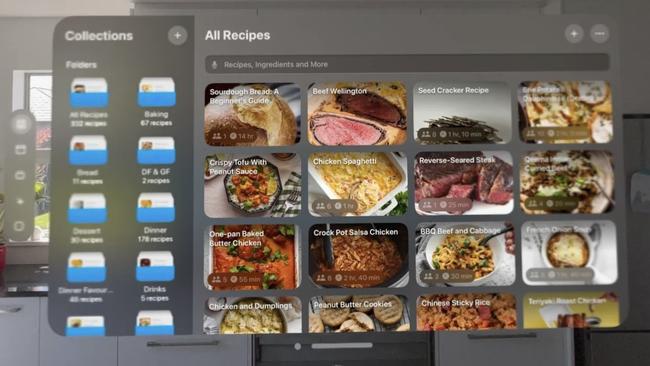
Angus Stevens, co-founder and chief executive of virtual and augmented reality agency Start Beyond said Vision Pro was “undeniably customer-centric” but “its high price point and single-user limitation pose challenges for broad business adoption, except for perhaps highly specific daily tasks”.
Still he said its Australian launch was a “significant milestone” as it seeks to shake a market dominated by Facebook owner Meta and Sony, which have both produced cheaper headsets for years.
“It’s exciting to see Apple join the metaverse race, though they’ve chosen a unique path. Apple has substantial ground to cover to catch up with Meta, which has gained invaluable real-world experience and insights from businesses and consumers. Regardless of the outcome, this competition will drive market growth and significantly benefit Australia’s metaverse industry. Apple’s entry will push existing players to innovate further,” Mr Stevens said.
“Additionally, the presence of a tech giant like Apple will attract more investment and talent, fostering the development of new applications and technologies to enhance user experiences. I’m eager to see how Apple leverages its ecosystem and resources to shape the future of the metaverse.”
More Coverage
Originally published as The local software firms cashing in on Apple’s Vision Pro





